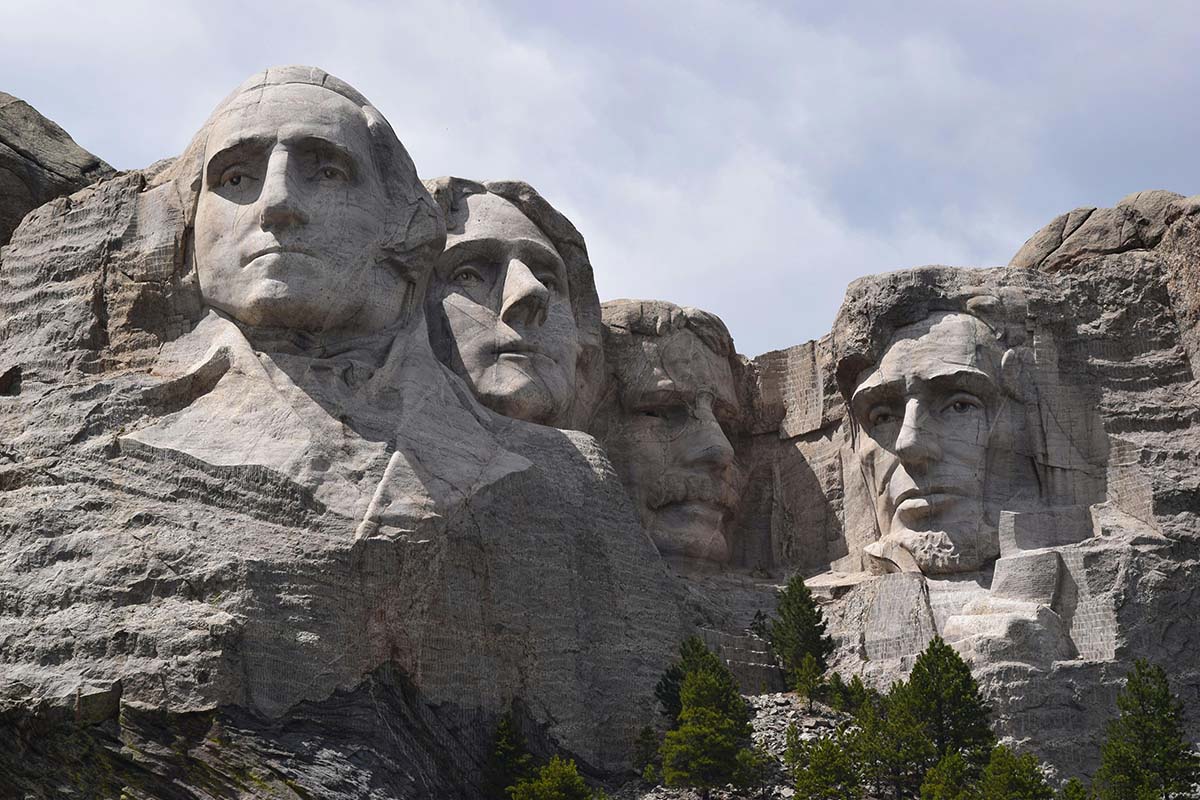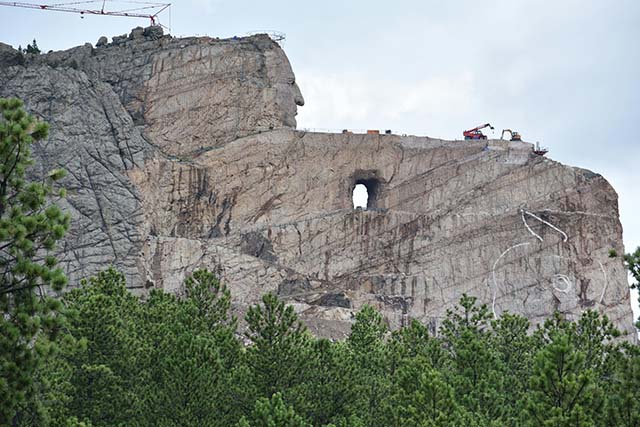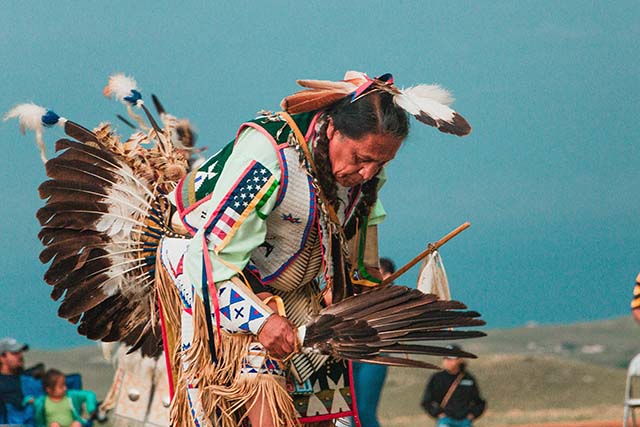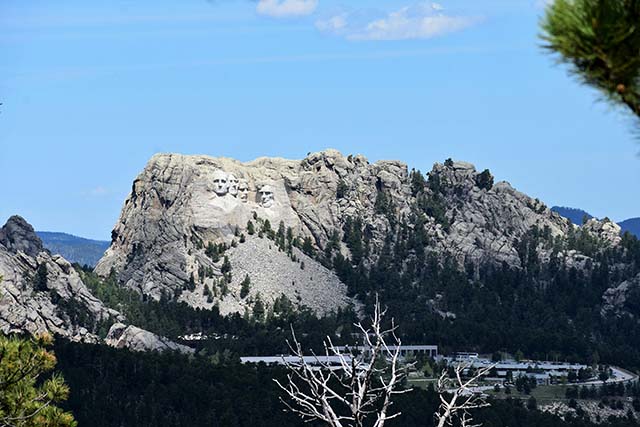
Mount Rushmore, known for its colossal carvings of four U.S. presidents, holds a wealth of stories beyond its grand facade. This monumental sculpture, nestled in the Black Hills of South Dakota, is not just a symbol of American history but a staple of North America in general. It’s also a canvas of untold tales. As I delved into the stories of Mount Rushmore, I discovered the human struggles, cultural impacts, and secret facets of this renowned monument. Are you ready to uncover and learn what truly makes Mount Rushmore a place of historical intrigue?
The Vision Behind the Mountain
Mount Rushmore’s journey began with Gutzon Borglum’s ambitious dream. It’s a tale of vision, carving out history on a grand scale. With chisel in hand and a clear vision in mind, Gutzon Borglum set out to etch a story into the Black Hills. His goal was to craft a monument echoing America’s ideals and history. He imagined a colossal tribute, immortalizing the nation’s essence in granite.
It is worth noting that the choice of Washington, Jefferson, Lincoln, and Roosevelt wasn’t random. Each face was chosen to narrate a chapter of the American saga. Washington for the nation’s birth, Jefferson for expansion, Lincoln for preservation, and Roosevelt for development. These faces were to be more than just sculptures; they were to be storytellers, watching over the land.
Amid varying public opinions and political debates, Borglum’s vision took shape. The project intertwined art with history, creating a narrative set in stone, overlooking the lands with silent yet powerful stories of America’s journey.
Stories of Mount Rushmore: The Workers Behind the Carvings
Mount Rushmore’s majestic faces result from the tireless efforts of unsung heroes, whose dedication is etched into every inch of the stone. The workers were a mix of local miners, rock climbers, and even unemployed men seeking a livelihood during the Great Depression. Still, they came together with a common purpose. While they were not skilled sculptors, their determination and hard work were unparalleled.
Obviously, their workday was a battle against harsh elements. Suspended hundreds of feet in the air, they faced the danger of falling rocks, equipment failures, and the relentless Dakota weather. Despite these hazards, there were surprisingly few serious injuries, a testament to their skill and caution. Just like the legendary Paul Bunyan, a giant lumberjack known for his incredible strength, these men showed immense resilience. Their laborious days involved using jackhammers, dynamite, and hand tools to shape the granite meticulously. They worked with precision, ensuring that Borglum’s vision was brought to life.
Beyond the physical labor, the workers developed a sense of community and camaraderie. They shared stories, meals, and dreams, creating bonds that lasted a lifetime. In addition, their shared experiences on this colossal project brought them together, creating a unique brotherhood. The workers behind Mount Rushmore were more than just laborers; they were craftsmen of history.

Environmental and Cultural Impact
Mount Rushmore’s construction left a lasting mark on the landscape and the region’s cultural heritage. Carving the monument involved extensive rock removal, altering the natural appearance of the Black Hills. This intervention in the landscape raised concerns about the environmental impact, including changes to the natural habitats and potential effects on local wildlife.
Especially for the Lakota Sioux, the Black Hills are sacred. Known as “Paha Sapa” to the Lakota Sioux, the hills hold profound sacred and cultural significance. To the Lakota, the area is a spiritual sanctuary. It is believed to be where these people received their spiritual origin. According to their lore, it’s the place where their cultural hero, White Buffalo Calf Woman, brought them the sacred pipe, which is central to their religious practices.
The creation of Mount Rushmore in this revered place led to significant cultural and spiritual repercussions. The Lakota Sioux view the monument as violating the Treaty of Fort Laramie, which granted them ownership of the Black Hills. Today, the conversation continues about respecting and acknowledging the cultural significance of the “mountain.” Efforts to recognize and honor the history and rights of the Native American tribes in the area are ongoing. This creation brought to light the complex relationship between progress, art, and respect for nature and indigenous cultures. Its legacy is a reminder of the need for a balanced approach to development and heritage preservation.

Unseen Aspects of Mount Rushmore
The stories of Mount Rushmore share hidden elements that go unnoticed by many. These features add depth to its story and significance. One lesser-known aspect that I discovered is the Hall of Records. Borglum envisioned this as a place to store America’s most important documents. This chamber, located behind the monument, was meant to be a time capsule of sorts, a record of American history for future generations.
The construction process had its unique methods. Dynamite was primarily used to remove large amounts of rock. Precision sculpting was then achieved with smaller tools. This blend of rough and refined techniques was critical in crafting the monument’s detailed faces.
A few intriguing facts that I discovered:
– Over 90% of the carving was done with dynamite.
– The workers used “honeycombing” to smooth the granite faces.
– No fatalities occurred during the monument’s construction, a remarkable feat considering the project’s scale and era.
These less-known aspects of Mount Rushmore reveal the ingenuity and care taken in its creation. They contribute to a fuller understanding of this iconic symbol of American history.
Mount Rushmore in Popular Culture
Mount Rushmore’s iconic status has made it a staple in various aspects of popular culture, symbolizing American ideals and history. Above all, this monument has been a dramatic backdrop in numerous films and books. It often symbolizes ideals or becomes a pivotal location in stories. Its grandeur brings a sense of awe and national pride, making it a favorite among storytellers.
Internationally, Mount Rushmore is seen as a representation of the United States itself. Its depiction in media, from movies to advertisements, influences how America is viewed globally. It is a tourist destination and a symbol of American history and values.
As a subject in educational materials, Mount Rushmore helps teach American history. It’s also a discussion topic about art, conservation, and cultural sensitivity. For families and educators looking for engaging educational experiences, along with some of the best museums for kids, it often includes interactive exhibits. In my opinion, Mount Rushmore’s presence in popular culture extends beyond entertainment; it influences perceptions, educates, and inspires.

Conclusion
Exploring the Stories of Mount Rushmore reveals much more than just a monument carved into a mountainside. From the visionary artists and brave workers to the environmental and cultural implications, it holds tales that deepen its significance. These narratives give context to the monument, showing it as a complex symbol with diverse meanings. The monument’s role in popular culture and education illustrates its influence beyond South Dakota. It’s not just a site to visit but a point of reflection on American history, values, and artistry. Finally, for me, it’s a reminder of the multiple facets of history, carved in stone and in the collective memory of a nation.
 About the author:
About the author:
Casey O’Riley is a passionate writer with a keen interest in American landmarks. With a talent for uncovering hidden tales, Casey’s writings offer a fresh perspective on well-known monuments. She currently works for vanexpressmoving.com, a moving company with over a decade of relocation experience. As such, Casey also enjoys writing blog posts that help people relocate near some of the most amazing American landmarks.
Browse Mount Rushmore Tours Now Available


Leave a Reply
You must be logged in to post a comment.